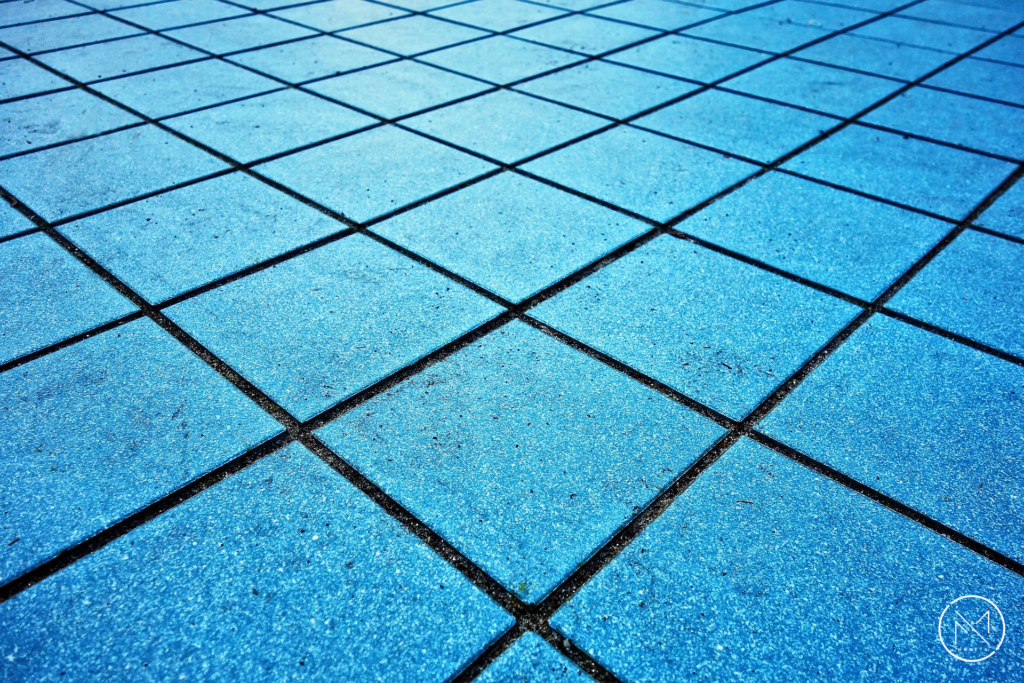Swimming pool tile problems can be a source of frustration for pool owners. These concerns not only impact the pool’s aesthetic appeal but, if not addressed, can develop into more serious structural issues. Understanding the most frequent swimming pool tile issues and how to correct them will help you keep your pool looking and functioning properly.
Common Swimming Pool Tile Problems
👉 Cracked or Broken Tiles
Cracked or broken tiles are one of the most common swimming pool tile problems. This can occur due to various reasons, including natural wear and tear, ground movement, or heavy impacts.
Causes of Cracked or Broken Tiles
- Natural wear and tear over time
- Ground movement or shifting
- Heavy objects hitting the tiles
How to Fix Cracked or Broken Tiles
To repair cracked or broken tiles, first drain the pool to below the damaged tile level. Carefully remove the damaged tile using a hammer and chisel, ensuring that it does not damage adjacent tiles. Clean the surface well before applying a thin coat of pool tile adhesive. Place the new tile in position and allow it to set for 24 hours. Finally, grout the tile and wait another 24 hours before refilling the pool.

👉 Loose or Falling Tiles
Reasons for Loose or Falling Tiles
Loose or falling tiles are common issues in swimming pools. These problems can be caused by improper installation, water infiltration behind the tiles, or the use of incorrect adhesives.
Causes of Loose or Falling Tiles
- Improper installation techniques
- Water seeping behind the tiles
- Using the wrong type of adhesive
How to Fix Loose or Falling Tiles
To fix loose or falling tiles, begin by draining the pool to below the affected area. Remove the loose tiles and clean the area thoroughly. Use a waterproof barrier to prevent future water infiltration. se a high-quality, water-resistant adhesive to repair the tiles. Grout the tiles and allow them to set before refilling the pool.
👉 Discolored or Stained Tiles
Identifying the Causes of Discolored or Stained Tiles
Discolored or stained tiles can make a pool look unappealing. This issue can be caused by algae growth, mineral deposits, or chemical imbalances in the water.
Causes of Discolored or Stained Tiles
- Algae growth due to poor water maintenance
- Mineral deposits from hard water
- Chemical imbalances in the pool water
How to Fix Discolored or Stained Tiles
To restore discolored or damaged tiles, first adjust the pool’s chemical balance to prevent future stains. To gently scrub the tiles, use a pool tile cleanser or vinegar and baking soda solution. For tougher stains, consider using a pumice stone or a commercial pool tile stain remover.
Maintaining Swimming Pool Tiles
Regular Maintenance Tips
Regular maintenance can prevent many common swimming pool tile problems.
Tips for Maintaining Swimming Pool Tiles
- Regularly check and adjust the pool’s chemical levels
- Clean tiles weekly to prevent algae and mineral buildup
- Inspect tiles periodically for signs of damage or looseness
Advanced Repair Techniques for Severe Tile Damage
Professional Tile Replacement
For severe tile damage that cannot be addressed through simple DIY repairs, professional tile replacement may be necessary. This involves hiring experienced pool technicians who can assess the extent of the damage and replace the affected tiles with precision. Professional repairs ensure that the new tiles are installed correctly and that the pool remains structurally sound.
Advantages of Professional Tile Replacement
- Ensures high-quality, durable repairs
- Maintains the structural integrity of the pool
- Provides a long-term solution to severe tile damage
Using Epoxy for Underwater Repairs
In some cases, it may be possible to repair damaged tiles without draining the pool by using epoxy adhesives designed for underwater applications. This method is particularly useful for minor repairs and can save time and resources. However, it’s important to use high-quality epoxy products and follow the manufacturer’s instructions carefully to ensure effective repairs.
Benefits of Underwater Epoxy Repairs
- Allows for quick and efficient tile repairs
- Eliminates the need to drain the pool
- Provides a strong, water-resistant bond for damaged tiles
Conclusion
Understanding and addressing common swimming pool tile problems is essential for maintaining the longevity and aesthetic appeal of your pool. Recognizing issues such as cracked or broken tiles, loose or falling tiles, and discolored or stained tiles allows you to take the necessary actions quickly. Regular maintenance, such as checking chemical levels, cleaning tiles, and inspecting for damage, can help prevent these issues. Keeping your pool tiles in good condition ensures a safe and comfortable swimming experience, thereby preserving the value and beauty of your investment.




